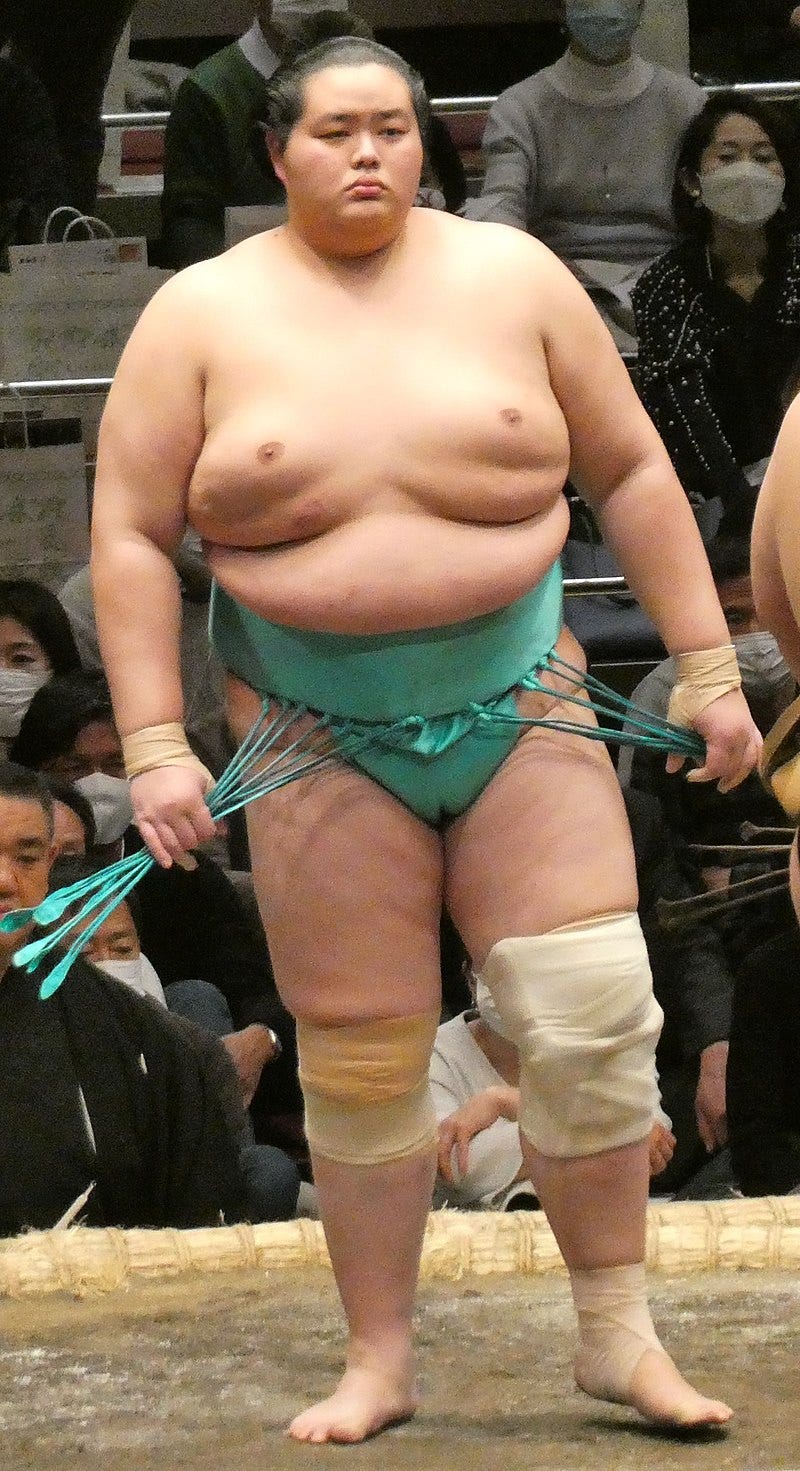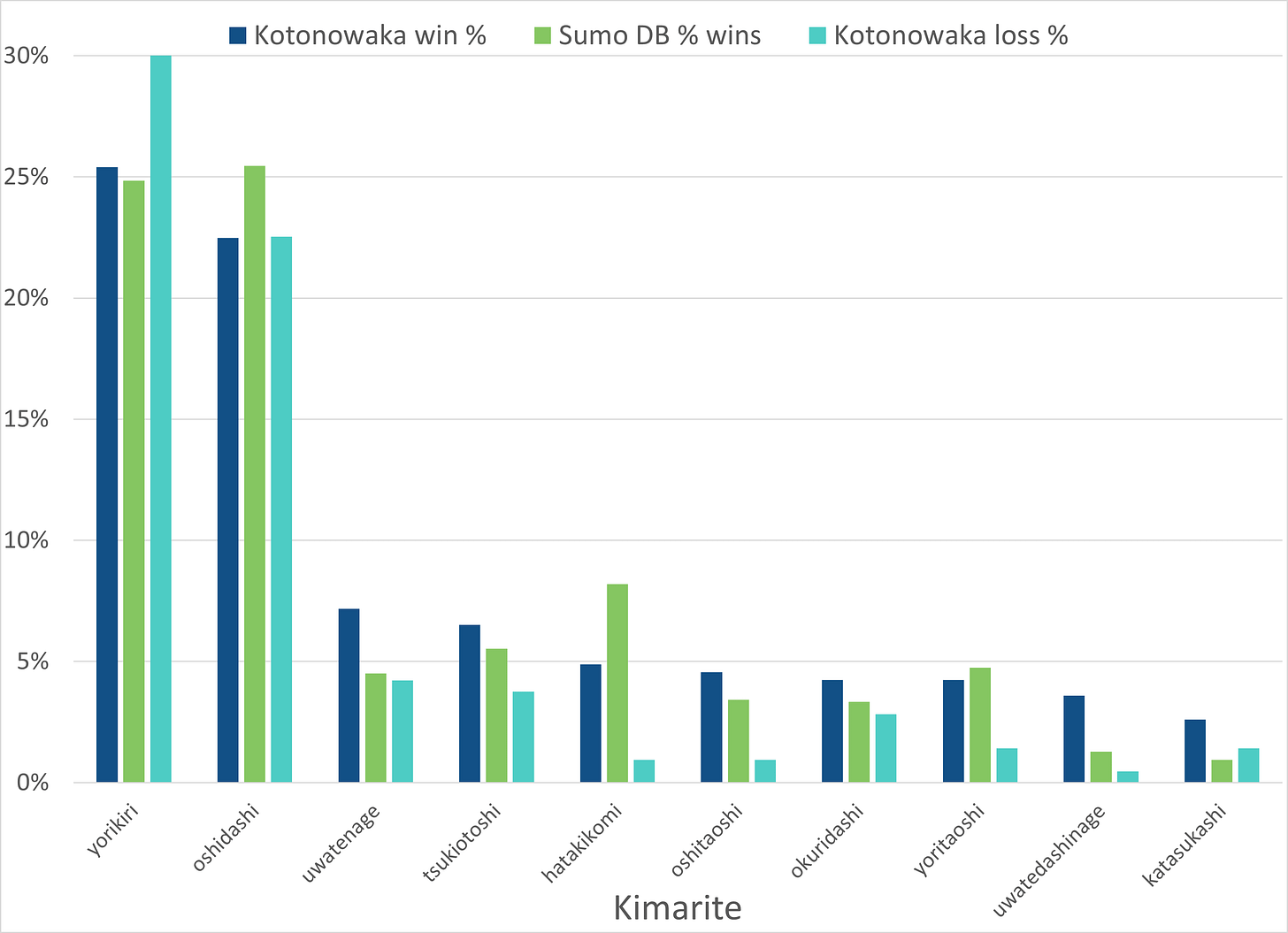Kotonowaka profile - what a "typical" rikishi looks like
There's a reason these are typical profiles
So yes, sumo wrestlers like Ura, Tobizaru, and Midorifuji are some of my favorites. They tend to be surprising in many ways.
Kotonowaka, on the other hand, is a more stereotypical wrestler.
Okay, he’s one of the taller and heavier guys, but if you saw him, you’d think — yeah, that’s a sumo wrestler.
Mmm, yeah, that quad-boob situation. That does happen from the bulking up.
Anyway, moving on from that.
Rank and weight profile of Kotonowaka, Jan 2022-Nov 2023
As with the other wrestler profiles, let’s check how Kotonowaka has done over the last couple years:
No, I don’t use the same range for weight for these guys, because they’re all different sizes. Kotonowaka did seem to bulk up a bit, increasing by 11 kilograms (about 24 pounds), from January 2022 to July 2023, before backing down to 170 kgs (375 pounds).
Now, yes, 375 pounds is a lot, but he’s 189 cm (6 feet, 2 inches) tall.
As for his rank, during 2021, he had a mixed record, but as you can see he’s had a pretty good rise over the past two years. He’s been solid.
If you look at his background, his dad and granddad were well-known sumo wrestlers. His dad is his stablemaster. His granddad was a yokozuna. He’s had solid results, as you can see… but he really isn’t all that flashy in his sumo, as you’ll see below.
Kimarite profile: About as basic as you can get
A win is a win is a win.
For each triplet, the dark blue bar is the percentage of Kotonowaka’s wins from that kimarite, the next bar is the percentage of all bouts in the sumo database with wins from that kimarite, and the third is the percentage of losses for Kotonowake from that kimarite.
You’ll kind of see that Kotonowake matches the overall sumo database pretty well.
You’ll be unsurprised that Kotonowake ends up with a much lower uniqueness score than the other three rikishi I’ve profiled so far.
Uniqueness standings so far
Again, I use the Hellinger distance for discrete distributions as my metric for the kimarite distribution uniqueness. They are measured against the sumo database’s average.
The minimum possible measure is 0 (matches the average exactly), the maximum possible is 1 or 100% (diverges from average completely).
Here are the four rikishi results so far:
So Midorifuji is the most unusual, with his dominant katasukashi move.
Kotonowaka is “basic”, as the kids say. But he’s the sekiwake, and the little guys have to be tricky to try to stay in Makuuchi, is my argument.
So maybe that’s what I need to check out — that the “style” of sumo can be typical or might have to be unusual, if one is short or light.








